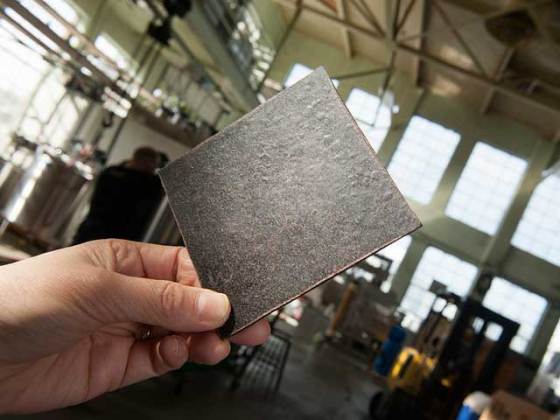Turning winemaking waste into food supplements and flowerpots
 Not so long ago, we published a story about orange pomace and its potential to be used as gluten-free flour, and researchers at the Oregon State University (OSU) have discovered how to turn the pulp from crushed wine grapes into a natural food preservative, biodegradable packaging materials, as well as a nutritional enhancement for baked goods.
Not so long ago, we published a story about orange pomace and its potential to be used as gluten-free flour, and researchers at the Oregon State University (OSU) have discovered how to turn the pulp from crushed wine grapes into a natural food preservative, biodegradable packaging materials, as well as a nutritional enhancement for baked goods.
Wineries typically pay for the pulp to be hauled away, but a small percentage is used in low-value products such as fertilizer and cow feed. Back in 2010, Australian researches suggested it could be used in a renewable energy plant powered by wine industry grape waste. This approach pays off within 5 years of operation and it cuts CO2 emissions by 69 percent.
According to the U.S. Department of Agriculture, the United States wine industry alone creates a tremendous amount of waste from processing more than 4 million tons of grapes each year. The pulp, which consists of stems, skins and seeds, is known as pomace and it’s actually packed with dietary fiber and phenolics, which have antioxidant effects.
“We now know pomace can be a sustainable source of material for a wide range of goods”, said Yanyun Zhao, a professor and value-added food products specialist with the OSU Extension Service. “We foresee wineries selling their pomace rather than paying others to dispose of it. One industry’s trash can become another industry’s treasure.”
OSU researchers have dried and ground it to create edible and non-edible products. By extracting dietary fiber from pomace, the researchers managed to turn it into powders that can be added to foods. Because the phenolics in pomace also control microbial growth and keep fats from deteriorating, OSU researchers also added the powdery fiber to yogurts and salad dressings to extend their shelf life by up to a week without a notable change of taste or texture.
The researchers also used pomace to make colorful, edible coatings and films that can be stretched over fruits, vegetables and other food products. They contain antioxidants, seal in moisture and control the growth of some bacteria.
Additionally, the scientists added pomace powders, which are gluten-free, to muffins and brownies. They replaced up to 15 percent of the flour in the recipes with it and thus increased the fiber and antioxidants in the baked goods. The research continues as scientists are also adding pomace to yeast breads.
“Adding fiber-rich ingredients can change dough’s absorption qualities and stiffness”, said Andrew Ross, OSU cereal chemist. “We’re trying to find the right balance of pomace in dough while measuring the bread for its density, volume, color and taste. Commercial bakeries need this information before using pomace flour for large-scale production.”
OSU researchers transformed pomace into biodegradable boards, which can be molded into containers, thus being suitable for use as serving trays and temporary biodegradable flowerpots. After burial in soil for 30 days, the products degraded by 50 to 80 percent.
Researchers found that the methods for making products from pomace vary depending on the sort of grapes. That’s because winemaking processes differ and end up with pulp with different levels of sugar, nitrogen, phenolics and other compounds. In their experiments, researchers used pomace from grapes that included Pinot Noir, Merlot, Morio Muscat and Müller Thurgau. OSU researchers are seeking to establish partnerships with companies interested in marketing the products made from processed wine grape pomace.
For more information, read the article published in the Food Chemistry: “Wine grape pomace as antioxidant dietary fibre for enhancing nutritional value and improving storability of yogurt and salad dressing” [406KB PDF].










Leave your response!